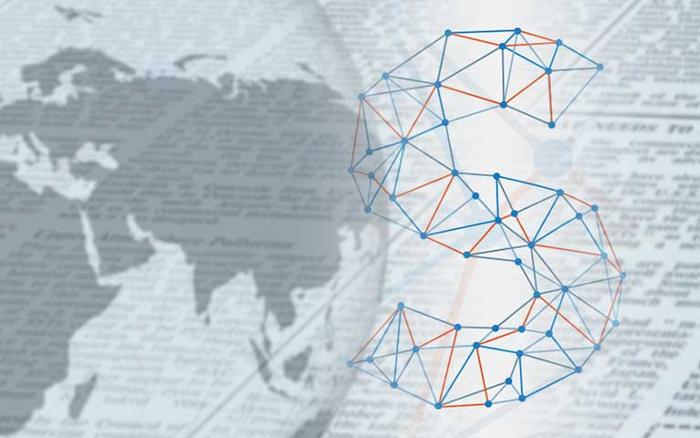

Paloma Velasco (AES): Technological progress has radically transformed the response to threats
Technological progress in private security has radically transformed the way threats are prevented, detected and responded to, according to the executive director of the Spanish Association of Security Companies.
Key points include improved threat prevention and detection, advanced cybersecurity, systems integration, automation and rapid response, mobility and remote control, increased efficiency and cost reduction.
What is your assessment of technological progress and digitalisation in the security sector?
Technological progress and digitalisation in the private security industry can be seen in a very positive light, as they have radically transformed the way threats are prevented, detected and responded to. Key aspects include improved threat prevention and detection, advanced cybersecurity, systems integration, automation and rapid response, mobility and remote control, and increased efficiency and cost reduction.
In the improvement of threat prevention and detection, intelligent video surveillance stands out, as cameras with artificial intelligence (AI) can detect suspicious behaviour in real-time and reduce false positives. And predictive analytics: tools based on big data and AI help to foresee risks before they occur, thanks to the analysis of patterns and historical data. In terms of advanced cybersecurity, the industry has had to adapt quickly to new digital threats. And solutions such as next-generation firewalls, endpoint detection and response (EDR), and identity management systems (IAM) are in widespread use.
In systems integration, centralised platforms enable unified management of physical and logical security, integrating alarms, video surveillance, access control and cybersecurity in a single environment. Moreover, thanks to automation, many security processes (such as access blocking or alerts) are carried out in milliseconds, enabling an immediate response to incidents. Meanwhile mobile applications and cloud systems allow security managers to oversee operations from anywhere. Finally, technology reduces the need for constant human intervention, leading to significant operational efficiencies and better resource allocation.
What are the challenges associated with these developments?
Although the overall impact is positive, there are also challenges, such as greater technological complexity, which requires highly trained personnel. For this reason, as we at AES have consistently emphasised, training remains essential. Other challenges include the risk of cyberattacks on interconnected and automated systems, as well as a growing dependency on technology providers and connectivity.
In conclusion, the security industry has made a major leap toward digitalisation, with clear benefits in efficiency, response capability and prevention. However, this progress also demands strategic management, continuous investment in technology and training, and a holistic vision of security that combines both physical and digital aspects. The integrated security approach promoted by AES and offered by our member companies is essential to implementing all these advancements.
What new technological developments are expected in the coming years?
In the coming years, the security industry is expected to undergo even deeper technological advancements, driven by artificial intelligence, automation, global connectivity and the rise of hybrid threats. The main technological developments, along with the advantages and applications that will shape the future of our industry, include artificial intelligence and machine learning, the Internet of Things in security, cloud solutions, advanced biometrics and contactless authentication, the use of drones and robotics, blockchain for security and traceability, integrated and automated cybersecurity, and smart cities and urban surveillance.
In the field of artificial intelligence (AI) and machine learning, behavioural analysis stands out, with systems capable of detecting anomalies in real-time based on behavioural patterns (of people, vehicles or access activity). Conversational AI is also notable, featuring virtual security agents for access control, emergency response or alert systems. Threat prediction is another key area, using algorithms that anticipate attacks or crimes before they happen through large-scale data analysis. Regarding the Internet of Things (IoT) in security, we will have interconnected devices: smart sensors (temperature, motion, presence) that generate automated alerts. And with home automation applied to security: full integration of alarms, locks, cameras, and access controls in homes, buildings and cities.
As for cloud solutions, Security as a Service (SECaaS) stands out: cloud-based platforms that enable management, storage, monitoring and response without the need for physical infrastructure. Remote monitoring is also key: overseeing facilities from globally distributed operations centres. In the area of advanced biometrics and contactless authentication, we will see facial, iris, vascular and gait recognition (identifying by walking patterns); along with multi-modal identification systems that combine several methods (e.g., face, voice and digital behaviour) for enhanced security. Also noteworthy are autonomous drones for perimeter patrol, aerial surveillance and real-time situation assessment. And security robots for patrolling critical facilities, with direct communication with control centres.
Regarding blockchain for security and traceability, unalterable records will stand out for access control, audits or chain-of-custody management; as well as secure blockchain-based digital identities for employees, citizens or visitors. In terms of integrated and automated cybersecurity, we will have XDR (Extended Detection & Response): solutions that combine data from multiple sources to detect threats holistically. And with Zero Trust: security models where no user or device is trusted by default—not even those within the internal network. Finally, in the realm of smart cities and urban surveillance, integrated urban systems stand out, using AI, sensors, cameras and open data to prevent crime and manage emergencies. Also noteworthy are digital twins of critical infrastructure, used to simulate risk scenarios.
In conclusion, the next developments in security will be defined by automation, connectivity, artificial intelligence and a preventive approach. The focus will not only be on reacting to threats, but on anticipating, understanding and proactively neutralising them. At AES, we are closely monitoring these trends to support our companies in this mission. We have a cybersecurity working group and an AI and data protection task force that publish reports and articles to guide and advise the security industry on these future challenges.
Can you tell us in more detail what role artificial intelligence will play in the security sector?
Artificial intelligence (AI) is revolutionising the private security industry, and in the coming years it will play a key role in the prevention, monitoring, response and analysis of security incidents. For example, in intelligent surveillance and video analytics, there will be AI-powered cameras capable of detecting suspicious behaviour, intrusions, abandoned objects or unauthorised individuals in real-time. Other possibilities include facial recognition and licence plate detection to help identify individuals or vehicles of interest without constant human intervention, as well as reducing human fatigue from monitoring multiple screens.
In predictive analysis and incident prevention, AI algorithms will be able to analyse historical behaviour patterns and anticipate risks before they occur. AI tools will also identify high-risk areas or anomalous behaviour in employees, visitors or vehicles. For response automation, there will be systems that automatically trigger alarms, lock access points or notify authorities based on real-time AI decisions. These systems will also integrate with drones or security robots that patrol areas, detect movement or transmit footage to control centres. Regarding resource management and optimisation, AI will enable intelligent allocation of security personnel based on real-time needs, performance monitoring of guards, patrol routes and protocol compliance. It will also help reduce operational costs by automating routine tasks.
In intelligent access control, AI systems will combine biometrics (face, voice, fingerprint) with behavioural analysis to grant access. Authentication will become more secure and flexible—even in high-security environments. In integrated cybersecurity, many private security companies are already offering hybrid services that combine physical and digital protection. AI assists in detecting cyberattacks, vulnerabilities, and unauthorised access to confidential systems or databases. As for remote monitoring and 24/7 services, control centres using AI will stand out for their ability to filter real threats from false alarms more effectively. Remote surveillance of properties, assets, and people will be enhanced through sensors, cameras and data analysis.
What challenges and ethical considerations must be taken into account in all these developments?
In terms of privacy, the use of facial recognition or constant tracking can raise significant concerns. When it comes to technological dependency, a system failure could leave an entire operation exposed. We experienced what this means in the blackout at the end of April. Regarding regulation, it will be crucial to establish legal and ethical boundaries for the use of AI in private security. The European Union is currently preparing legislation on this matter that will be mandatory in Spain.
In summary, AI will not fully replace security professionals, but it will significantly enhance their capabilities—allowing them to focus on more strategic, complex and human-centric tasks. To achieve this, professionals will need proper training. Companies that adopt AI responsibly and effectively will gain a significant competitive advantage in our industry.





